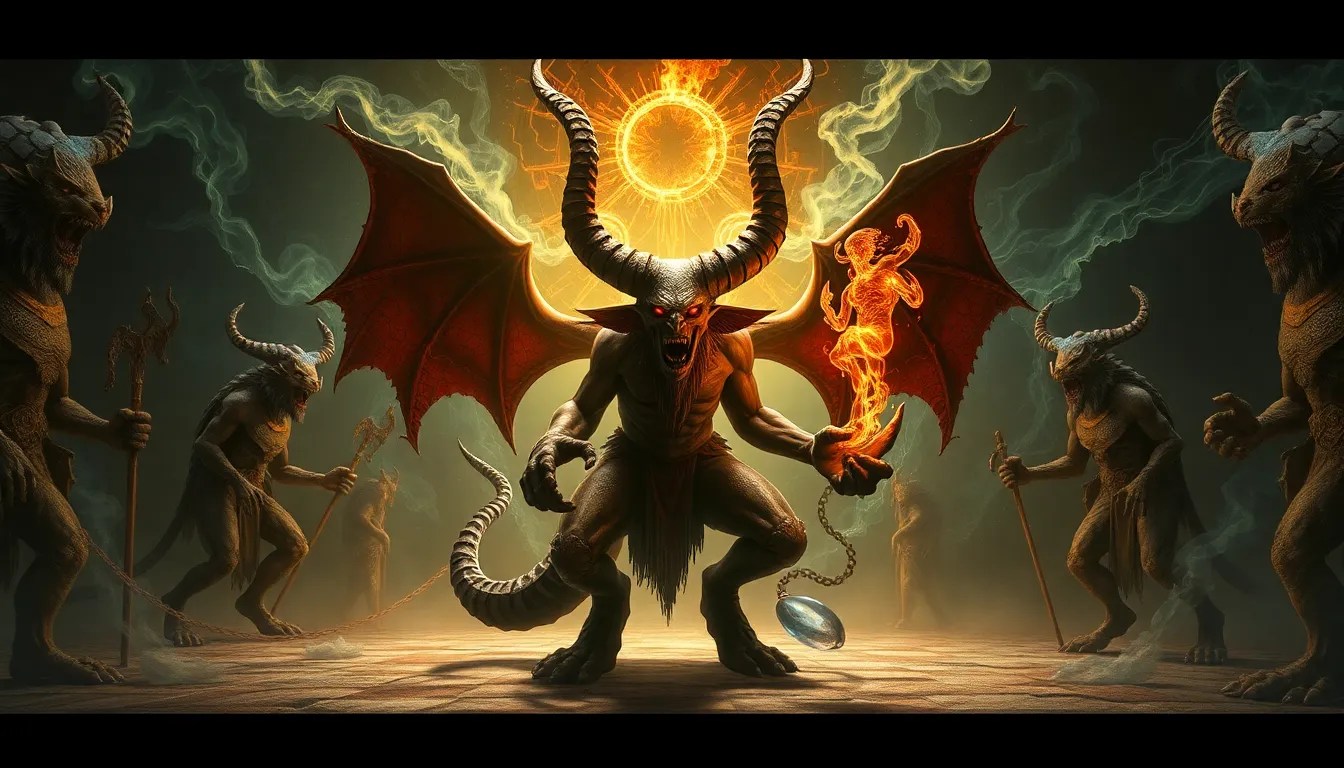The Fascinating World of Babylonian Demonology Uncovered
I. Introduction to Babylonian Demonology
Babylonian mythology is a rich tapestry of stories, deities, and supernatural beings that reflect the beliefs and values of ancient Mesopotamian cultures. At the heart of this mythology lies demonology, the study of demons, which played a crucial role in understanding the universe, morality, and human existence.
Demonology in ancient Mesopotamian culture was not merely a focus on evil entities but encompassed a broader understanding of the forces of nature, the divine, and the human condition. This article aims to explore the intricacies of Babylonian demonology, its key figures, rituals, and its enduring legacy in subsequent cultures.
II. Understanding Demons in Babylonian Belief
In Babylonian society, demons were understood as complex entities that could embody both benevolent and malevolent forces. The term ‘demon’ itself refers to various supernatural beings, often associated with chaos, illness, misfortune, and even protection.
- Definition and Role: Demons were seen as mediators between the divine and the human world, capable of influencing lives in both positive and negative ways.
- Duality of Good and Evil: Babylonian thought embraced a dualistic view, where the balance between good and evil was essential for cosmic order.
- Comparative Insight: Similar to other ancient cultures, such as the Greeks and Egyptians, Babylonian demonology reflects a universal attempt to explain the unknown through the existence of otherworldly beings.
III. Major Babylonian Demons and Their Characteristics
Among the myriad of demons in Babylonian mythology, several notable figures stand out due to their distinct attributes and cultural significance:
A. Overview of Key Demons
- Lilith: Often depicted as a night demon, Lilith is associated with storms and disease. She is considered a figure of female empowerment and danger.
- Pazuzu: Known as the demon of the southwest wind, Pazuzu is a protector against other malevolent spirits, particularly in the context of childbirth and fertility.
- Asag: A monstrous demon associated with disease and chaos, Asag is said to be a foe of the gods, particularly Ninurta, who battles him to restore order.
B. Attributes and Symbolism
Each demon carries specific attributes that reflect their nature:
- Lilith: Often represented with long hair and wings, symbolizing her connection to the night and her role as a seductress.
- Pazuzu: Typically depicted with a lion’s head, human body, and bird-like features, symbolizing his dual nature as both protector and destroyer.
- Asag: His monstrous form embodies chaos, often illustrated as a giant with grotesque features, representing the destructive forces of nature.
C. Cultural Significance and Mythological Stories
The stories surrounding these demons provide insight into Babylonian values and fears. For instance, Lilith’s tale warns against the dangers of unchecked female sexuality, while Pazuzu’s protective role highlights the importance of safeguarding families from evil.
IV. The Origins of Babylonian Demonology
The historical context of Babylonian demonology traces back to the earlier Sumerian and Akkadian cultures, evolving significantly over time:
A. Historical Context
As Babylon emerged as a dominant power around 2000 BCE, its mythology absorbed and transformed elements from its predecessors, creating a unique demonological framework.
B. Influences from Earlier Beliefs
Many Babylonian demons can be traced back to Sumerian deities, with characteristics and stories adapted to reflect the changing societal values of the Babylonians.
C. Evolution of Texts and Rituals
Over centuries, demonological texts and rituals evolved, reflecting a deeper understanding of the cosmos and shifting perceptions of good and evil.
V. Rituals and Practices for Dealing with Demons
Dealing with demons was a significant aspect of Babylonian life, leading to the development of specific rituals and practices:
A. Exorcisms and Protective Incantations
Exorcisms were common practices aimed at dispelling malevolent spirits. Incantations, often inscribed on clay tablets, were recited to invoke divine protection.
B. Role of Priests and Shamans
Priests and shamans held essential roles in society, serving as intermediaries between the divine and the human. Their knowledge of rituals and incantations was crucial for maintaining cosmic order.
C. Use of Amulets and Talismans
Amulets inscribed with protective symbols or spells were commonly used to ward off evil, reflecting a tangible means of engaging with the spiritual world.
VI. The Impact of Babylonian Demonology on Later Cultures
Babylonian demonology has had profound influences on later religious traditions, particularly:
A. Influences on Jewish, Christian, and Islamic Demonology
Many concepts from Babylonian demonology permeated into Jewish folklore, influencing the development of demons in Christianity and Islam.
B. Transmission of Myths and Stories
Through trade and conquest, Babylonian myths and stories were shared across cultures, leading to adaptations and reinterpretations in various traditions.
C. Continuity and Adaptation
In modern contexts, elements of Babylonian demonology can still be found in literature, film, and popular culture, showcasing the lasting impact of these ancient beliefs.
VII. Archaeological Discoveries and Textual Evidence
Archaeological findings and ancient texts have provided significant insights into Babylonian demonology:
A. Key Archaeological Sites
Excavations in Babylon, Ur, and Nippur have uncovered temples, tablets, and artifacts that illuminate the practices related to demonology.
B. Analysis of Ancient Texts
Texts such as the Enuma Elish and the Epic of Gilgamesh contain references to demons, providing context and understanding of their roles in society.
C. Role of Modern Scholarship
Modern scholars have played a vital role in interpreting these texts, shedding light on the complexities of Babylonian beliefs and practices.
VIII. Conclusion: The Legacy of Babylonian Demonology
The significance of Babylonian demonology lies not only in its historical context but also in its reflection of human fears and aspirations. Understanding these ancient beliefs provides valuable insights into the cultures that shaped our world.
The ongoing fascination with Babylonian myths continues to inspire contemporary society, inviting further exploration and study of Mesopotamian mythology. As we delve into the past, we uncover the intricate relationships between humanity, the divine, and the supernatural.



